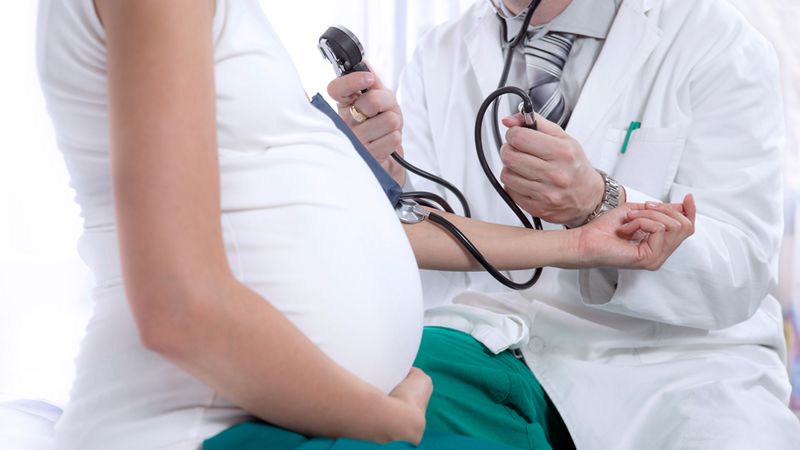Maternal Risks Appear Low Despite Increases in Cancer During Pregnancy
Findings from 3 studies combining birth and cancer registers showed postponing childbearing partially correlated with cancer increases in pregnant women.
Data from a study published in Acta Obstetricia et Gynecologica Scandinavica found that pregnancy-associated cancer (PAC) rates increased by age, with women ages 15 to 19 at the lowest for PACs and women ages 40 to 44 at the highest risk.

Data across 3 studies assessing risk factors associated with increases in cancer incidence during pregnancy among Swedish women have revealed that patients with breast cancer have favorable prognoses and low adverse obstetric and perinatal outcome risks, according to a news release from Karolinska Institutet.1
Data from a study published in Acta Obstetricia et Gynecologica Scandinavica found that pregnancy-associated cancer (PAC) rates increased by age, with women ages 15 to 19 at the lowest for PACs (5.3 cases per 100,000) and women ages 40 to 44 at the highest risk (63.5 cases per 100,000).2 Additionally, preterm deliveries were more common among women with PAC during pregnancy (30.6%) vs all deliveries (5.3%) or PAC within 1 year following delivery (8.1%).
Investigators of this studyfound that crude incidence rates of pregnancy-associated cancer increased significantly from 21.3 per 100,000 between 1980 and 1984 to 38.2 per 100,000 from 2010 to 2014. Additionally, crude incidence increased over all time periods and trimesters, most notably first-year post-delivery. Significant associations were observed between both increasing maternal age and later trimesters and pregnancy-associated cancer rate.
Immigrant background was significantly associated with lower pregnancy-associated cancer rates for any tumor type (incidence rate ratio [IRR], 0.76; 95% CI, 0.64-0.91; P = .0025), but not for breast cancer (IRR, 0.88; 95% CI, 0.60-1.29; P = .5071). Additionally, smoking was significantly associated with a higher pregnancy-associated cancer risk (IRR, 1.28; 95% CI, 1.07-1.54; P = 0.0069), most notably for cervical cancer (IRR, 2.32; 95% CI; 1.52-3.54; P = .0001).
Investigators utilized Swedish birth and cancer registers from 1973 to 2017 to identify all cases of women with pregnancy-associated cancers ages 15 to 44 in the population-based cohort study. The study only included first occurrences of cancer in each woman and in the group of women without cancer, only deliveries free of maternal cancer history were included.
Of deliveries among women with breast cancer evaluated in another study published in Acta Obstetricia et Gynecologica Scandinavica, 42.6% were planned preterm (relative risk [RR], 67.1; 95% CI, 33.2%-135.6%), and 8.3% were spontaneous preterm (RR, 3.8; 95% CI, 2.0-7.5).3 Additionally, although cesarean section and induced delivery were more common among this patient population, breast cancer was not associated with higher risks for maternal pregnancy complications. Furthermore, no pregnant women with breast cancer experienced gestational diabetes, pre-eclampsia, or stillbirth.
In this study, women diagnosed with cancer during pregnancy were identified in the Swedish Cancer and Medical Birth Registers between 1973 and 2017. Births with maternal breast cancer were matched with 10 births from cancer-free women by age, calendar year, and birth order.
Findings from a different study published in ESMO Open show that although no significant differences in estrogen receptor (ER)–negative status were found in patients diagnosed with breast cancer during the first trimester (42%) and comparators (32%), second trimester diagnoses were associated with higher ER-negative status (62%).4 Furthermore, tumors in patients with diagnoses in the third trimester were larger, had more distant metastases, and were more often ER-negative vs comparators (54% vs 32%); they were also more likely to be luminal HER2 (22% vs 18%) or HER2-positive (22% vs 9%).
Additionally, mortality rates were higher for pregnancy-associated breast cancer than matched comparators. Disaggregated by trimester, the first trimester mortality rate was like that of matched comparators; 18.6 per 1000 person-years (95% CI, 6.0-57.8) vs 19.1 per 1000 (95% CI, 18.4-19.9). However, second and third trimester diagnoses were associated with significantly higher mortality rates; 42.0 (95% CI, 26.5-66.7) and 37.1 (95% CI, 24.9-55.3) per 1000, respectively.
In this study, the Swedish Cancer Register was used to identify women ages 18 to 44 diagnosed with invasive breast cancer from 1992 to 2018. Women with breast cancer diagnosed during pregnancy or with a postpartum diagnosis were matched 1:2 by year and age to comparators diagnosed with breast cancer not associated with pregnancy.
References
- Increasing incidence of cancer during pregnancy, yet maternal and perinatal risks are low. News release. Karolinska Institutet. Published August 22, 2024. Accessed October 23, 2024. https://tinyurl.com/55chhb4f
- Lundberg FE, Stensheim H, Ullenhag GJ, et al. Risk factors for the increasing incidence of pregnancy‐associated cancer in Sweden – a population‐based study. Acta Obstet Gynecol Scand. 2024;103(4):669-683. doi:10.1111/aogs.14677
- Lundberg FE, Gkekos L, Rosriguez-Wallberg KA, Fredriksson I, Johansson ALV. Risk of obstetric and perinatal complications in women presenting with breast cancer during pregnancy and the first year postpartum in Sweden 1973–2017: a population‐based matched study. Acta Obstet Gynecol Scand. 2024;103(4):684-694. doi:10.1111/aogs.14555
- Gkekos L, FE Lundberg, Humphreys K, Fredriksson I, Johansson ALV. Worse histopathology and prognosis in women with breast cancer diagnosed during the second trimester of pregnancy. ESMO Open. 2024;9(4):102972. doi:10.1016/j.esmoop.2024.102972
How Supportive Care Methods Can Improve Oncology Outcomes
Experts discussed supportive care and why it should be integrated into standard oncology care.